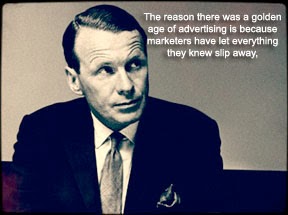It's a new discussion that isn't new. Every few years, someone wants to break up Proctor & Gamble, which is the largest publicly traded personal products company in the world. With a market capitalization of $220 billion, it's also one of the largest companies in the United States.
Some of the reasoning is tied to sales. The company recently reported 3 percent growth in organic sales, but its CEO suggested that growth could have broken 4 percent if it had split off some brands. Specifically, the idea is to keep the top 70-80 products that generate about 90 percent of its sales.
About 23 of those top brands boast sales ranging from $1 billion to $10 billion, and 14 with sales of $500 million to $1 billion. All those would be kept, even if some stakeholders think the time might be right to break it up in bigger chunks rather than shed smaller assets like Duracell.
Some of the reasoning is psychological. Big companies rarely capture double digit growth rates. They are also prone to job cuts and restructuring, which can take a toll on employee morale. Most people see them as threatened by smaller and much more nimble competitors, especially those with a keenness for innovation — something P&G has tried to keep by developing a new model for R&D much like it did for marketing, which led the company to embrace digital at a deeper level.
How a leaner P&G could produce a better marketing model.
From a marketing perspective, breaking P&G into three or four big chunks doesn't make as much sense, especially after the company successfully retooled its marketing division to think more like brand managers and less like corporate number crunchers. The result has been mixed, with the lackluster launch of Tide Pods but the iconic #LikeAGirl campaign that people still talk about.
Perhaps all the company needs to do to reinvigorate growth is to even out those marketing efforts by reimagining a hybrid between its old and new models. Once the company successfully diverges some of its non-core brands, P&G could develop a brand partnership model that provides each brand manager more market insight, consumer data, negotiation power, and creative co-ops that cross over from one brand to the next. (e.g., #LikeAGirl might not be confined to a single brand.)
There are times where P&G succeeds in developing collaborative strategies. As an Olympic sponsor, the company successfully promoted several brands as part of one package. Its sentimental Thank You Mom campaign during the 2012 summer Olympics, for example, resulted in a $500 million sales boost and prompted an encore for the winter games. (The company was ready with 38 different YouTube commercials before the Olympics even started.)
Even better than the immediate return, any P&G converts will deliver a lifelong return for the company. It's this kind of forward thinking that continually leaves a positive impression. Now all the company has to do is start thinking beyond a singular event to bind its brands. Spontaneous crossovers could go a long way, especially for a company that reinvests more revenue into marketing.
Such a move by P&G could reinvigorate marketing.
Much like the company already directs regions and media, P&G could be on the verge of a much more versatile marketing machine, one that is worthy of a case study. Such a program could be built with individual brand campaigns with the most successful providing crossover opportunities and uniting themes (combined with bigger buys) for the others. It would reinvigorate some marketing theory, even for small companies willing to partner with complementing and non-competing businesses.
Such a move would also quell the idea that P&G needs to be broken up into three or four big chunks, given the resilience of flexible marketing comes from a bigger network of brands (not a smaller one). Sometimes the brand could market itself (with shared research, etc.) but other times build off something another brand has built or reinforce each other's reach by sharing a proven theme.
What do you think? In an era when consumers appreciate smaller companies rather than the giants of the past, some people believe it is too late for any behemoths. Others disagree. They see some of today's giants rewriting the playbook while their pockets are still deep and revenues large. And with the company vested in innovation, such as 3-D bioprinting, no one really knows what could be next.
Some of the reasoning is tied to sales. The company recently reported 3 percent growth in organic sales, but its CEO suggested that growth could have broken 4 percent if it had split off some brands. Specifically, the idea is to keep the top 70-80 products that generate about 90 percent of its sales.
About 23 of those top brands boast sales ranging from $1 billion to $10 billion, and 14 with sales of $500 million to $1 billion. All those would be kept, even if some stakeholders think the time might be right to break it up in bigger chunks rather than shed smaller assets like Duracell.
Some of the reasoning is psychological. Big companies rarely capture double digit growth rates. They are also prone to job cuts and restructuring, which can take a toll on employee morale. Most people see them as threatened by smaller and much more nimble competitors, especially those with a keenness for innovation — something P&G has tried to keep by developing a new model for R&D much like it did for marketing, which led the company to embrace digital at a deeper level.
How a leaner P&G could produce a better marketing model.
From a marketing perspective, breaking P&G into three or four big chunks doesn't make as much sense, especially after the company successfully retooled its marketing division to think more like brand managers and less like corporate number crunchers. The result has been mixed, with the lackluster launch of Tide Pods but the iconic #LikeAGirl campaign that people still talk about.
Perhaps all the company needs to do to reinvigorate growth is to even out those marketing efforts by reimagining a hybrid between its old and new models. Once the company successfully diverges some of its non-core brands, P&G could develop a brand partnership model that provides each brand manager more market insight, consumer data, negotiation power, and creative co-ops that cross over from one brand to the next. (e.g., #LikeAGirl might not be confined to a single brand.)
There are times where P&G succeeds in developing collaborative strategies. As an Olympic sponsor, the company successfully promoted several brands as part of one package. Its sentimental Thank You Mom campaign during the 2012 summer Olympics, for example, resulted in a $500 million sales boost and prompted an encore for the winter games. (The company was ready with 38 different YouTube commercials before the Olympics even started.)
Even better than the immediate return, any P&G converts will deliver a lifelong return for the company. It's this kind of forward thinking that continually leaves a positive impression. Now all the company has to do is start thinking beyond a singular event to bind its brands. Spontaneous crossovers could go a long way, especially for a company that reinvests more revenue into marketing.
Such a move by P&G could reinvigorate marketing.
Much like the company already directs regions and media, P&G could be on the verge of a much more versatile marketing machine, one that is worthy of a case study. Such a program could be built with individual brand campaigns with the most successful providing crossover opportunities and uniting themes (combined with bigger buys) for the others. It would reinvigorate some marketing theory, even for small companies willing to partner with complementing and non-competing businesses.
Such a move would also quell the idea that P&G needs to be broken up into three or four big chunks, given the resilience of flexible marketing comes from a bigger network of brands (not a smaller one). Sometimes the brand could market itself (with shared research, etc.) but other times build off something another brand has built or reinforce each other's reach by sharing a proven theme.
What do you think? In an era when consumers appreciate smaller companies rather than the giants of the past, some people believe it is too late for any behemoths. Others disagree. They see some of today's giants rewriting the playbook while their pockets are still deep and revenues large. And with the company vested in innovation, such as 3-D bioprinting, no one really knows what could be next.






































